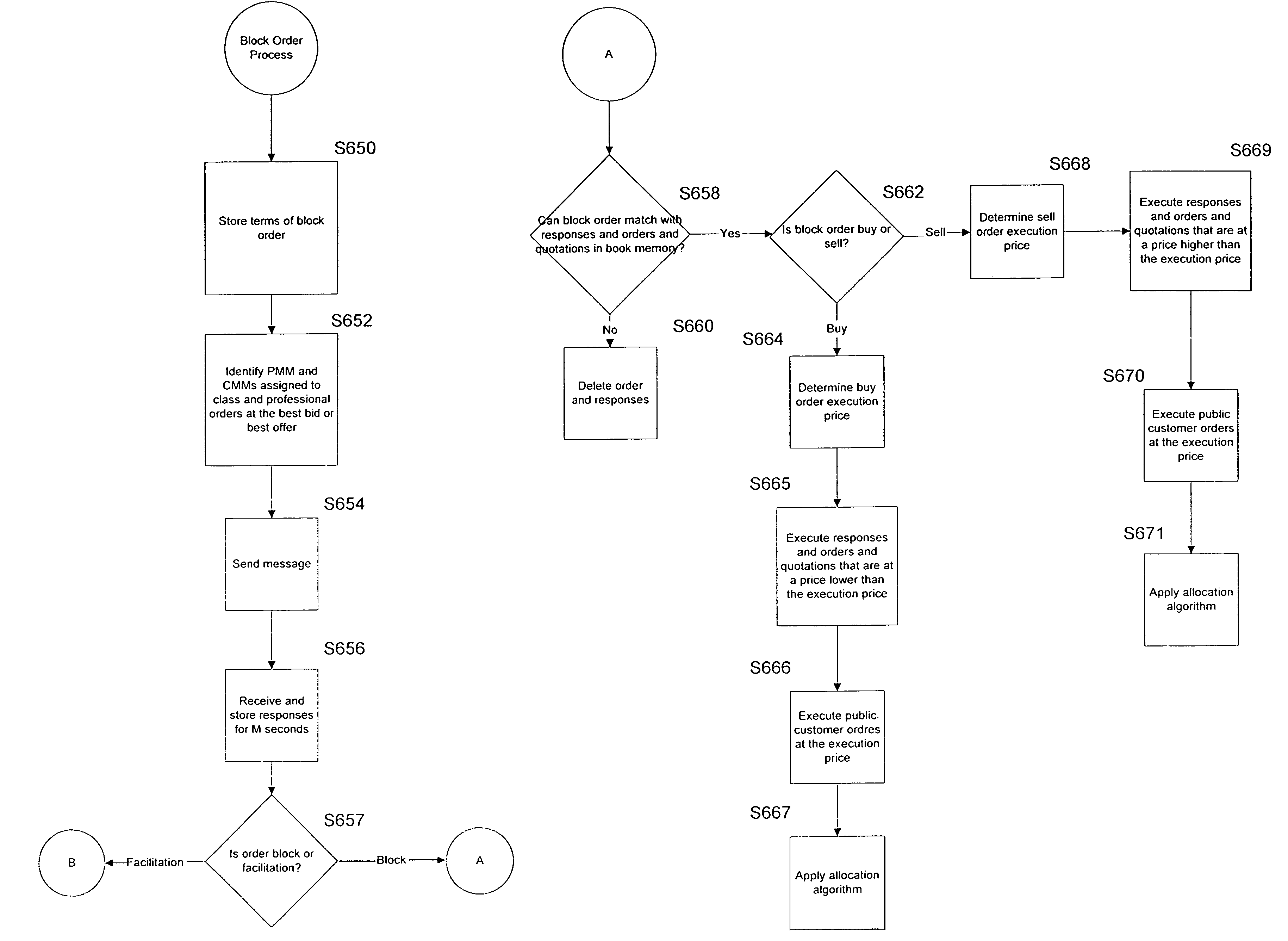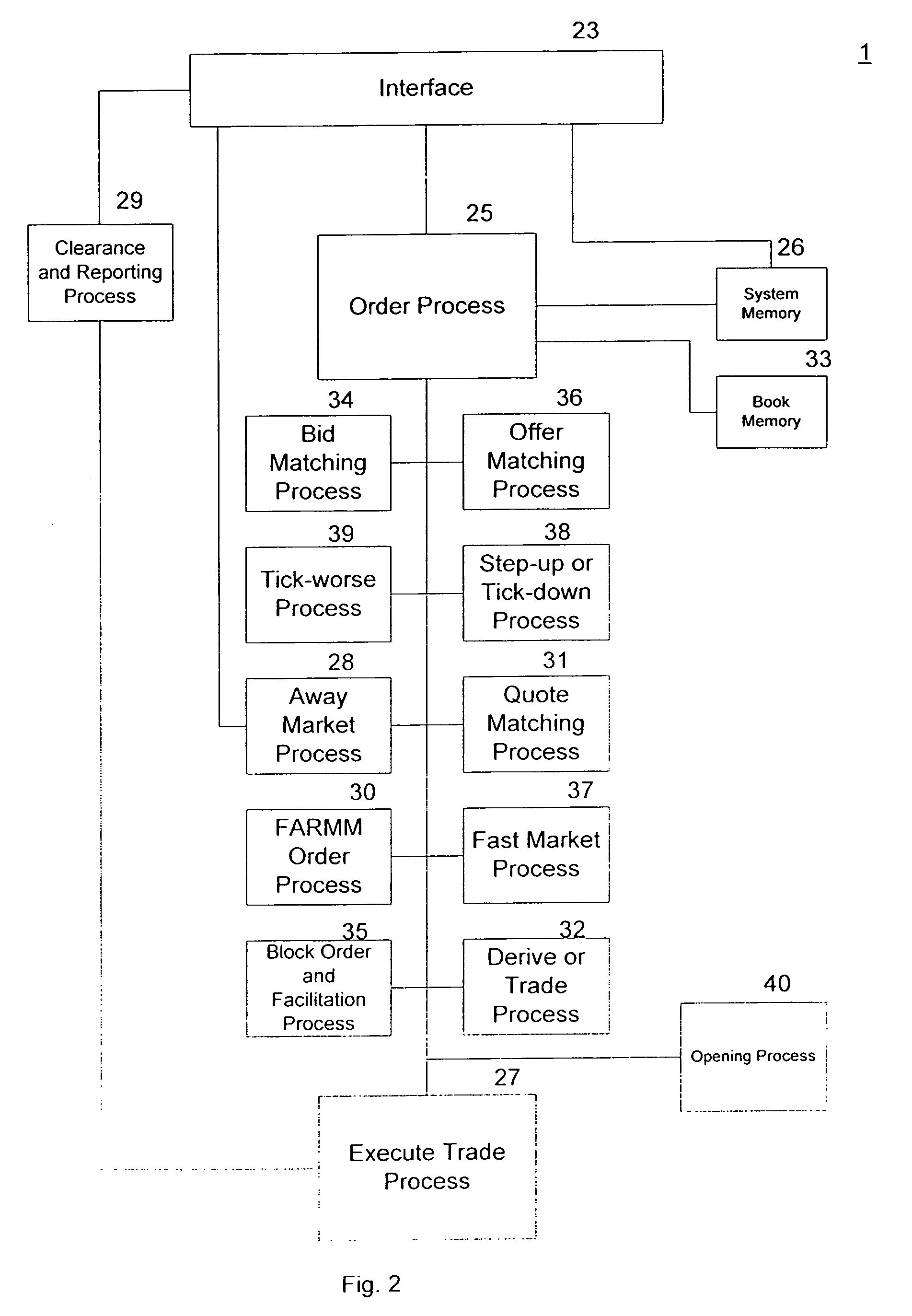Automated exchange for trading derivative securities
a technology of derivative securities and automated exchanges, applied in the field of securities markets, can solve the problems of slow transition to and use of computer-based technology on these exchanges, large inefficiencies and inadequacies, and inability to fully integrate, so as to improve liquidity, improve market order processing, and improve market order. the effect of fairness
- Summary
- Abstract
- Description
- Claims
- Application Information
AI Technical Summary
Benefits of technology
Problems solved by technology
Method used
Image
Examples
Embodiment Construction
[0037]Embodiments of the invention will be described in terms of an automated exchange market for stock options; options being contracts for the purchase or sale of a listed security at a particular strike price to be exercised on a particular date in the future. The invention, however, is not limited to the sale of options contracts and may also be applied to other financial instruments such as stocks, bonds, commodity futures contracts, currency, and the like.
[0038]The embodiments will be described in terms of a market for a single option; for example a put for IBM Class A stock expiring on Jan. 15, 1999 with a strike price of 140. It is to be understood that the exchange according to the invention simultaneously provides a market for a series of options for a number of underlying stocks across a range of exercise dates and at a range of strike prices. The vast number of options that can be traded makes the invention particularly advantageous over less automated systems because ma...
PUM
 Login to View More
Login to View More Abstract
Description
Claims
Application Information
 Login to View More
Login to View More - R&D
- Intellectual Property
- Life Sciences
- Materials
- Tech Scout
- Unparalleled Data Quality
- Higher Quality Content
- 60% Fewer Hallucinations
Browse by: Latest US Patents, China's latest patents, Technical Efficacy Thesaurus, Application Domain, Technology Topic, Popular Technical Reports.
© 2025 PatSnap. All rights reserved.Legal|Privacy policy|Modern Slavery Act Transparency Statement|Sitemap|About US| Contact US: help@patsnap.com



